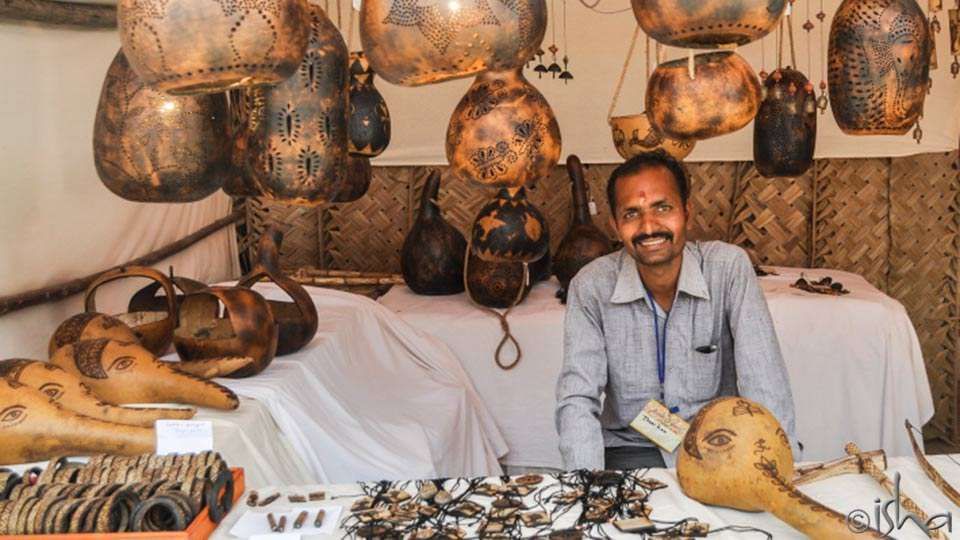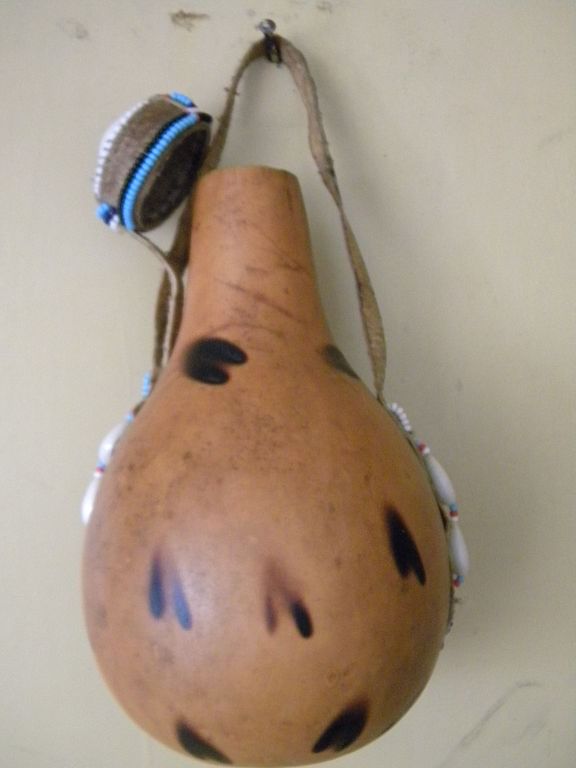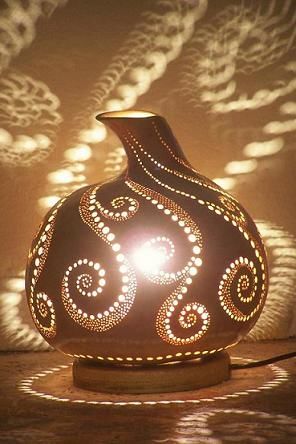Tuma – Decorative Gourd Craft of India
Tuma or decorative gourd craft is a unique handicraft from Bastar, India, which takes gourds beyond mere utilitarian use, to create truly innovative artwork. Watch the video for tuma craft in making.

Tuma or decorative gourd craft is a unique handicraft from Bastar, India, which takes gourds beyond mere utilitarian use, to create truly innovative artwork. The video gives a glimpse of a gourd craftsman in action.
Tuma or Gourd craft is one of many varied handicraft forms that is a part of the ongoing Hands of Grace, a handicraft exposition at the Isha Yoga Center, from February 19 - 28, 2014.
Craft: Tuma – Decorative gourd craft
Artisan: Jagat Ram Devangan
Place: Bastar, Chhattisgarh
Subscribe


Nature has its own beauty, even in the most unexpected things – like gourds for example! The Tuma craft from the Bastar region in the state of Chhattisgarh in India is a recently developed craft that brings out the hidden beauty of gourds! Tuma craft is made of the bottle gourd vegetable (Lagenaria siceraria), also known as calabash, opo squash, long lemon and lauki (in Hindi). Tuma craft originates from the people who used gourd shells as containers to store water and salfi (local drinks). Gradually, they began to decorate their vessels, and tuma craft, or decorative gourd craft, became popular within the state. Today, tuma products include a wide range of lampshades, wall hangings, utensils and masks.
Tuma craft – How it’s done


Firstly, gourds with appropriate natural shapes are selected and dried in the sun, sometimes for as long as six months. As a result, they turn brown in color. The darkness of the color depends on how old the gourd is. Once they are dry enough, they are thoroughly washed using mud, which acts as a scrubber. After the mud wash, the gourds are once again dried under the sun and kept in water for about five to six hours. This makes the upper layer loose, allowing it to be scraped of with a knife. The rear portion of the gourd is then cut using a hot iron knife, and the contents inside removed, making it completely hollow. Designs are then sketched on the gourd with a pencil and etched with a hot knife. This process burns the surface and makes the pattern permanent. If bowls and food utensils are made, they are boiled first to remove the gourd’s bitterness. Finally, the gourd is varnished.
The man behind the craft
Jagat Ram Devangan of Kondagaon is the craftsman behind the innovation of decorative gourd craft. He is the only Tuma craftsman in the whole area. Inspired by the structure of the vessel, he began experimenting with the form and style of it. Choosing interesting shapes and etching patterns on them, he gave birth to an altogether new craft form, which he named Tuma. Bitter gourds, which are normally not consumable, are used for the craft. Earlier, waste gourds from the village were used, but nowadays gourds are actually grown for this purpose. Today, Jagat Ram’s whole family is involved in the craft. His innovation and vision have brought him many honors, including state awards from the Chhattisgarh Government, National Merit certificates, the Kalamani award and Surajkund crafts mela award.
Reference: Design Resource on Tuma Craft of Bastar, by Palash Vaswani, Industrial Design Centre (IDC), IIT Bombay.




